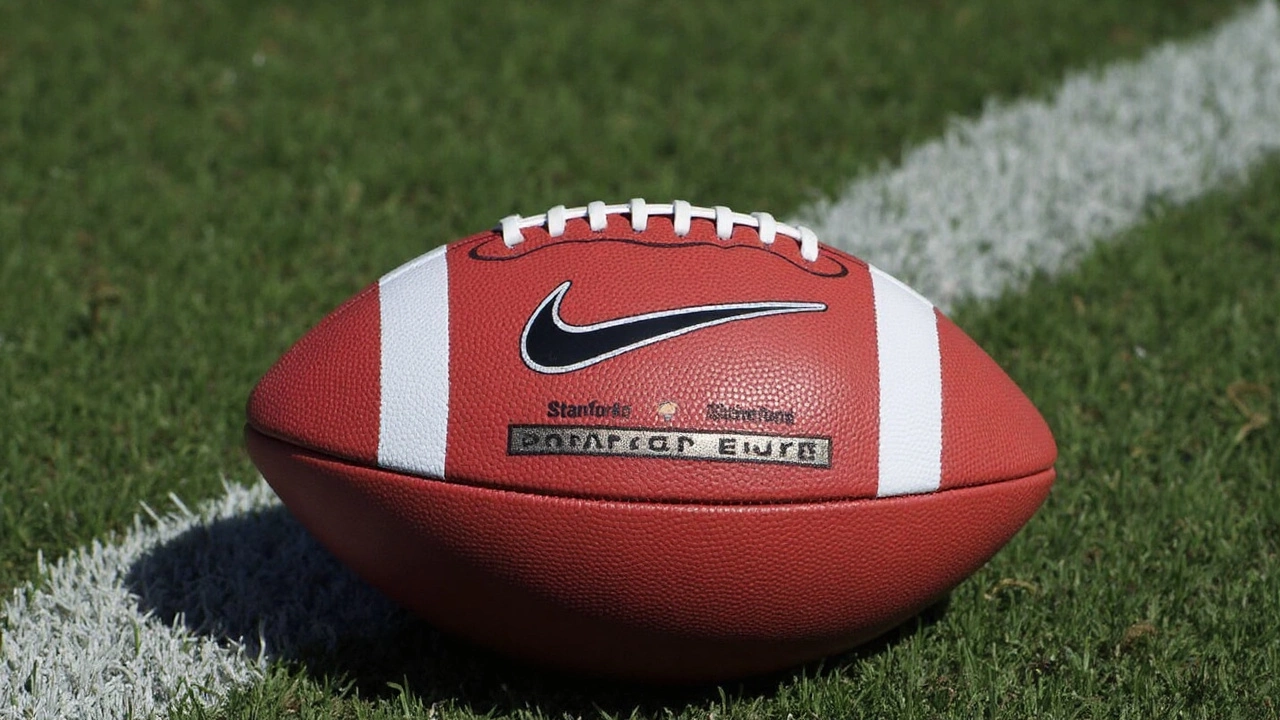In front of a sold-out crowd of 64,692 at LaVell Edwards Stadium, BYU bludgeoned Stanford 27-3, a night where defense, field position, and a poised freshman quarterback did the heavy lifting. If you’re measuring early-season certainty, this felt like it. The Cougars controlled the line of scrimmage, owned the turnover battle, and turned a headline nonconference game into a statement. For a program building around a young QB, BYU vs Stanford was less a test than a reveal.
How BYU controlled the game
True freshman Bear Bachmeier didn’t need gaudy numbers to tilt the field. He threw for 175 yards and set the tone with a 3-yard keeper in the first quarter, slipping inside for the opening touchdown. BYU went for two and missed, settling at 6-0, but the message was clear: the Cougars were comfortable leaning on their front and their fresh-faced quarterback.
From there, the game turned into a trench showcase. BYU outrushed Stanford 157-19, grinding down the Cardinal front with a steady rotation and clean blocking on the edges. LJ Martin churned out high-percentage yards, keeping the Cougars on schedule, and Sione Moa delivered the knockout in the third quarter with an 8-yard scoring run that pushed the margin to 24-0. It wasn’t flashy. It didn’t need to be.
Special teams kept the scoreboard moving while the offense stalled in tight. Kicker Will Ferrin was money, drilling field goals from 36, 30, 21, and 23 yards and adding an extra point after Moa’s touchdown. That leg mattered because BYU’s red-zone execution lagged. The Cougars got the hard part right—sustaining drives, winning first down, and creating short fields—but settled for three more than they’ll like on film review.
None of it would have mattered without the defense, which owned the night. Stanford finished with just 161 total yards, and the Cardinal ground game never left the blocks, stuck at 19 rushing yards. BYU produced eight tackles for loss and three sacks, collapsing the pocket before routes could develop. Oregon State transfer Ben Gulbransen never found rhythm, hounded by disguised pressures and clean tackling in space.
The defining sequence came late in the second quarter when linebacker Jack Kelly ripped the ball free on an 11-yard sack, and BYU fell on the fumble at Stanford’s 5-yard line. Even when the Cougars didn’t punch it in for six, they banked points and choked off momentum. A few snaps later came a safety—two more points that pushed the lead to 14-0 and put the game in BYU’s grip.
Turnovers were the other difference. BYU finished plus-three, flipping the field and handing the offense short fields throughout. Those are the hidden yards that win games in September. Linebacker Isaiah Glasker helped set the tone on the second level, cleaning up outside runs and shutting down Stanford’s stretch game before it could threaten the perimeter.
The scoring chart tells the story. BYU grabbed a 6-0 lead on Bachmeier’s keeper, then leaned on Ferrin’s first-half field goals (36, then 30 yards) before the defense added a safety to push it to 14-0 at the break. Moa’s 8-yard burst after halftime and a Ferrin PAT made it 21-0, another short Ferrin kick (21 yards) stretched the lead to 24, and a late 23-yarder capped the Cougars’ tally. Stanford avoided the shutout with a 26-yard Emmet Kenney field goal with 10:31 left, but there was no late surge coming.
BYU head coach Kalani Sitake and defensive coordinator Jay Hill won this on identity. The Cougars set an edge, eliminated yards after contact, and forced Stanford to live in second-and-longs. That let BYU’s front pin its ears back and made every Cardinal dropback feel uphill. When you control first down, the rest becomes predictable.
What it means for both teams
For BYU, this was a heat-check on what the 2025 roster can be: defense-first, power run as the backbone, and a young quarterback who avoids the big mistake. Bachmeier didn’t force throws, moved chains with his legs when needed, and kept the tempo steady. Expect the staff to harp on red-zone efficiency after four field goals; if those become touchdowns, the Cougars’ ceiling jumps fast. Still, a clean 2-0 start with this kind of defensive bite travels.
The offensive line deserves a nod. They weren’t perfect in tight, but they consistently moved bodies between the 20s, and that’s the foundation of any late-season push. Martin’s patience and Moa’s finishing power are a good pairing for a freshman quarterback learning when to take the easy yards and when to look downfield. The pass game produced enough—175 yards without turnovers—to keep Stanford honest.
Stanford leaves Provo with more questions than answers. The run game never formed a base, which put Gulbransen in obvious passing situations and made protections easier to diagnose. Three turnovers and 19 rushing yards won’t beat anyone on the road, especially not in altitude with a crowd that gets louder the longer the defense sits on the field. The defense did battle inside the 20s, forcing BYU into kicks, and that’s a real positive Troy Taylor can build on. But the Cardinal need cleaner early-down execution and answers for pressure packages, fast.
There’s bigger-picture context here, too. Stanford is navigating a new travel reality and a new league slate, and September road trips like this can snowball if the run game isn’t stable. The Cardinal have to find manageable second downs, whether that’s with quicker perimeter touches, more option looks, or a simplified inside zone menu that allows the line to come off the ball without hesitation.
BYU, meanwhile, handled the moment. The Cougars entered favored by 20 and covered by four, a sign of a team that didn’t play to the number but to the plan. Win the turnover battle (3-0), own the rushing ledger (157-19), and shorten the field with special teams. That’s winning math in any conference, any month.
If you’re hunting for areas to clean up, the tape will circle two: red-zone finishing and the occasional bog-down on third-and-medium where receivers struggled to uncover quickly. But those are coachable after a comfortable win. The better news is how often BYU’s defense forced Stanford into checkdowns and immediate tackles, which kills drives just as surely as a sack.
One last note about the night itself: the environment mattered. Provo under the lights, with that crowd and that noise, is a test of poise for visiting offenses. BYU fed off it from the jump. The Cougars leave 2-0 with a clear identity, a freshman quarterback growing into the job, and a defense that plays with bad intentions. Stanford heads home knowing exactly where the fixes must start: on the ground, in protection, and with the ball.

